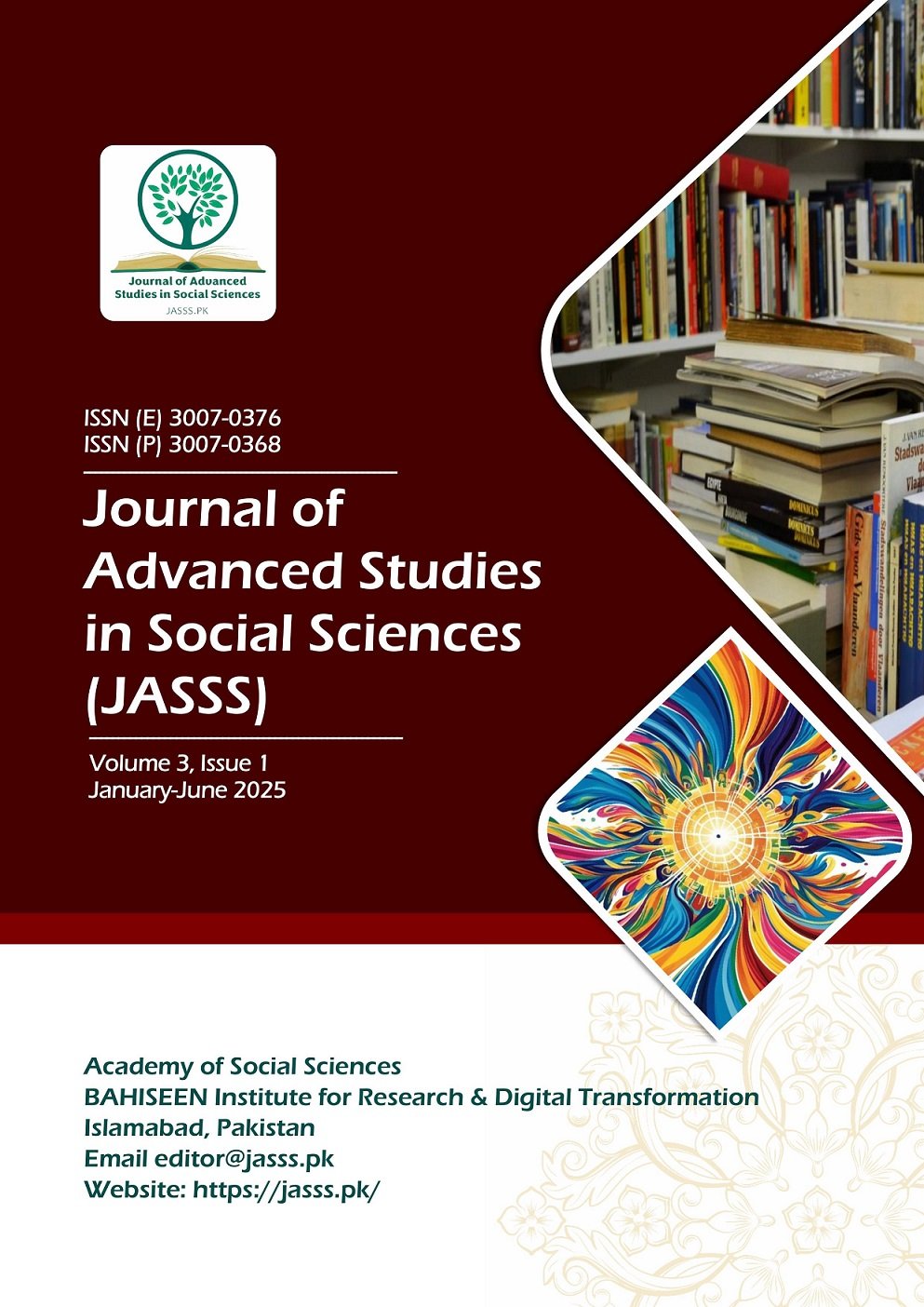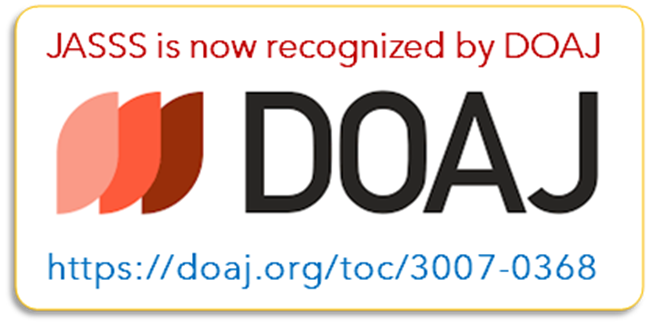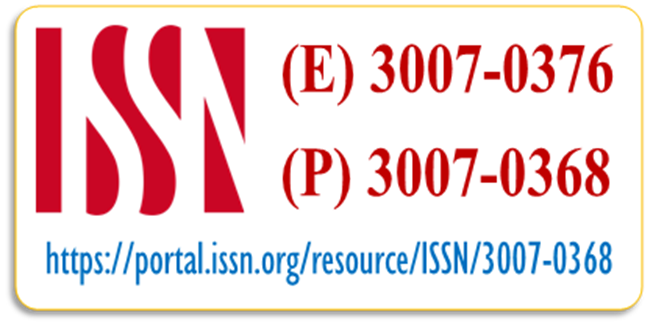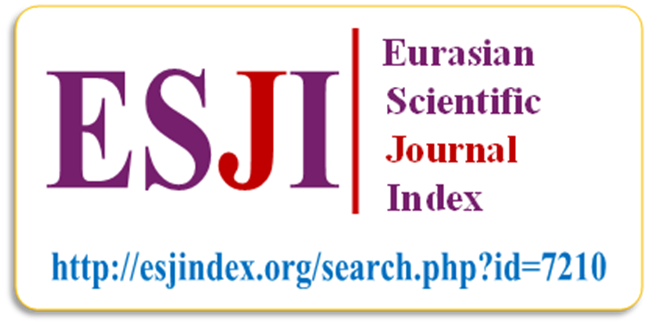Ethical and Legal Aspects of Generative AIand Copyright: The U.S. Example
DOI:
https://doi.org/10.5281/zenodo.15839147Keywords:
generative artificial intelligence (GAI), copyright law, fair use, copyright infringement, text-to-image AI, training data, legal challengesAbstract
Generative AI is transforming creative industries by merging advanced algorithms with human creativity. This paper examines the legal and ethical challenges of applying U.S. copyright law to AI-generated content. Using qualitative analysis of legal cases and a review of user-generated AI prompt data, we identify key issues regarding human authorship and fair use. This paper delves into the multifaceted ethical terrain of GAI, examining the perspectives of various stakeholders, including copyright holders, artists, and end users. It explores the ramifications of machine learning and training data on individual rights and innovation, striving to strike a balance that fosters progress while upholding artistic expression. In examining user-generated prompts submitted to the Midjourney platform, this study applied a qualitative coding framework to categorize prompts according to thematic elements, including artistic style, subject complexity, and apparent intent regarding originality. The coding scheme was developed inductively through an initial review of a representative sample of prompts and refined through iterative discussion among the authors. To enhance reliability, cross-validation was undertaken by independently coding a subset of prompts and reconciling discrepancies through consensus. This methodological approach seeks to provide insight into the emergent creative roles of AI users and their implications for copyright analysis. Nurturing open dialogue between proponents of change and preservation is crucial for addressing legal, ethical, and societal challenges, thereby harnessing the potential of generative artificial intelligence while safeguarding creators' rights and nurturing human creativity. Furthermore, this paper delves into the intersection of generative AI and copyright law, examining two fundamental questions: the copyrightability of generative AI-generated expression and the extent to which generative AI platforms and content may constitute copyright infringement or other violations. By exploring these questions, it contributes to the ongoing discourse surrounding the legal and ethical implications of this groundbreaking technology. Our findings indicate that current legal frameworks require clearer guidelines to balance innovation with the protection of creative rights.
Downloads
References
Federal Register 16190. (n.d.). Retrieved from Pursuant to the specific provision detailed in 88 Federal Register 16190, the Copyright Office is publishing this policy statement to provide clarity regarding procedures for reviewing and registering works that include material created through the use of.
-GBW. (2023, Mar 29). Am. Compl. Part 68, Getty Images (US), Inc. v. Stability AI, Inc., no. 1:23-cv-00135-GBW, ECF No. 13 (D. Del. Mar. 29, 2023).
-AMO, E. N. (2023, Jun 28). Compl. Chapter 64, Tremblay et al v. OpenAI, Inc. et al., no. 3:23-cv-03223-AMO, ECF No. 1 (N.D. Cal. Jun. 28, 2023).
U.S.C. section 106 n.42. (2002). Retrieved from www.govinfo.gov: https://www.govinfo.gov/link/uscode/17/106
U.S.C. section 106 n.47. (2002).
U.S.C. Section 107. (2023). 17 U.S.C. Section 107 (2023) n.42.
U.S.C. Section102. (2020). 17 U.S.C. Section 102 (2020).
U.S.C. Section102(b). (2020). 17 U.S.C. Section 102(b) (2020).
U.S.C. Section106. (2020). 17 U.S.C. Section 106 (2020).
U.S.C. Section107. (2020). 17 U.S.C. Section 107 (2020).
U.S.C. Section504. (2010). 17 U.S.C. Section 504 (2010).
U.S.C. Section512(c). (2010). 17 U.S.C. Section 512(c) (2010).
Andersen et al v. Stability AI Ltd. et al. (2023, Jan 13). Docket No. 3:23-cv-00201 (N.D. Cal. Jan 13, 2023); Getty Images v. Stability AI, Inc., Docket No. 1:23-CV-00135. Retrieved from https://www.courtlistener.com/docket/66732129/andersen-v-stability-ai-ltd/
Andersen v.Stability. (2023, Jan 13). Retrieved from www.courtlistener.com: https://www.courtlistener.com/docket/66732129/andersen-v-stability-ai-ltd/
Andrew. (2023, Sep 27). Stable Diffusion Art . Retrieved from "How does Stable Diffusion work?": https://stable-diffusion-art.com/how-stable-diffusion-work/
Arthur R. Miller. (1993). Copyright Protection for Computer Programs, Databases, and Computer–Generated Works: Is Anything New Since CONTU?,. 106 Harv.L.Rev. 977, 1065 (1993).
Ashley Belanger. (2023, July 10). Ashley Belanger, Sarah Silverman sues OpenAI, Meta for being “industrial-strength plagiarists,” Ars Technical, July 10, 2023.
Ashley Still. (2023, Oct 11). SVP of Digital Media, Adobe (Wall Street Journal Tech News Briefing,. Retrieved from www.wsj.com: https://www.wsj.com/podcasts/tech-news-briefing/how-adobe-plans-to-stand-out-from-the-ai-pack/180ef877-408e-457f-94b4-612352d8039b
Authors Guild v. Google, I. (2015). Authors Guild v. Google, Inc., 804 F.3d 202, 216, 218 (2d Cir. 2015).
Blake Brittain. (2023, Feb 22). AI-created images lose U.S. copyrights in test for new technology, REUTERS,. Retrieved from https://www.reuters.com/legal/ai-created-images-lose-us-copyrights-test-new-technology-2023-02- 22/.
Burrow-Giles Lithographic Co. v. Sarony Burrows, 111 U.S. 53, 55. (1884).
Campbell v. Acuff-Rose Music, I. 5. (1994). Campbell v. Acuff-Rose Music, Inc., 510 U.S. 569 (1994).
Carol Mullins Hayes. (2023, July 21). Data coding results, see Appendix B for detailed breakdown and examples of coded prompts and identified themes. Retrieved from Appendix B. Carol Mullins Hayes, Generative Artificial Intelligence and Copyright: Both Sides of the Black Box, Univ. of Wash. - The Info. Sch: https://papers.ssrn.com/sol3/papers.cfm?abstract_id=4517799.
Carol Mullins Hayes. (2023, July 21). Generative Artificial Intelligence and Copyright: Both Sides of the Black Box, Univ. ofWash. -The Info. Sch. Retrieved from https://papers.ssrn.com/sol3/papers.cfm?abstract_id=4517799.
Carol Mullins Hayes. (2023, July 21). Generative Artificial Intelligence and Copyright: Both Sides of the Black Box, Univ. ofWash. -The Info. Sch. Retrieved from https://papers.ssrn.com/sol3/papers.cfm?abstract_id=4517799.
Chang, M. D. (2023). The Prompt Artists. Proceedings of the 15th Conference on Creativity and Cognition,. Conference on Creativity and Cognition,, (pp. 75–87). doi:10.1145/3591196.3593515.
Copyright (UK). (1988). Copyright, Designs and Patents Act 1988, s. 1, section 9(3). Retrieved from www.legislation.gov.uk: https://www.legislation.gov.uk/ukpga/1988/48/section/9/enacted?view=plain
Copyright Office. (2024, April 26). U.S. Copyright Office, Cancellation Decision re: Zarya of the Dawn (VAu001480196). Retrieved from copyright.gov: https://copyright.gov/docs/zarya-of-the-dawn.pdf.
Copyright Review Board. (2022, Feb 14). Second Request for Reconsideration for Refusal to Register A Recent Entrance to Paradise. Retrieved from copyright.gov: https://www.copyright.gov/rulings-filings/review-board/docs/a-recent-entrance-to-paradise.pdf
Daniel J. Gervais. (2022). AI Derivatives: The Application to the Derivative Work Right to Literary and Artistic Productions of AI Machines,. 52 SETON HALL L. REV. 1111, 1125.
Denicola, R. (2016). Record No. TX0003633395. Retrieved from the University of Nebraska School of Law: https://papers.ssrn.com/sol3/papers.cfm?abstract_id=3007842.
Denicola, R. (2016). the University of Nebraska College of Law,. Retrieved from No. TX0001454063.: https://papers.ssrn.com/sol3/papers.cfm?abstract_id=3007842.
Eichner, S. (2023). The Copyright Implications of Generative AI. Presented at the AIPLA Annual Meeting,. National Harbor, MD.
Feist Publications. (1991). Feist, 499 U.S.C. at 361,. Retrieved from https://supreme.justia.com/cases/federal/us/499/340/
Google’s RankBrain . (n.d.). Retrieved from Example: Google’s RankBrain - https://blog.google/products/search/how-ai-powers-great-search-results/: https://blog.google/products/search/how-ai-powers-great-search-results/
govinfo.gov. (2023, 08 30). Retrieved from The provided source (https://www.govinfo.gov/content/pkg/FR-2023-08-30/pdf/2023-18624.pdf) outlines that generative AI can mimic human creativity, generating text, images, video, and audio, including human-like voices. Such outputs are recognized as copyr: https://www.govinfo.gov/content/pkg/FR-2023-08-30/pdf/2023-18624.pdf
Hayes, C. (2023). Generative Artificial Intelligence and Copyright: Both Sides of the Black Box. . Journal of Artificial Intelligence Research,, 17(2), 45-58.
Hayes, C. (2023). Generative Artificial Intelligence and Copyright: Both Sides of the Black Box. .Journal of Artificial Intelligence Research,, 17(2), 45-58.
Hayes, C. M. (2023, July 21). Generative Artificial Intelligence and Copyright: Both Sides of the Black Box, Univ. of Wash. -The Info. Sch. Retrieved from papers.ssrn.com: https://papers.ssrn.com/sol3/papers.cfm?abstract_id=4517799.
Hayes, C. M. (2023, July 21). Generative Artificial Intelligence and Copyright: Both Sides of the Black Box, Univ. ofWash. -The Info. Sch. Retrieved from https://papers.ssrn.com/sol3/papers.cfm?abstract_id=4517799.
Henrickson, L. (2021, Apr 4). “Building the Other Half of the Police Beard,” E-Book Review,. Retrieved from https://doi.org/10.7273/2bt7-pw23.: https://doi.org/10.7273/2bt7-pw23.
Henrique Centiero. (2023, Jan 29). The ultimate cheat codes to Midjourney prompting – Part 2, MEDIUM,. Retrieved from https://levelup.gitconnected.com/the-ultimate-cheat-codes-to-midjourney-prompting-part-2-2763323e67d0
Huzma Naveed, e. a. (2023, Oct 5). arxiv.org. Retrieved from "A Comprehensive Overview of Large Language Models", J. Latex : https://arxiv.org/pdf/2307.06435.pdf
Id. at § 306. (n.d.). Retrieved from the 1973 version of the Abstract,.
Inc. v. HathiTrust. (2014). Authors Guild, Inc. v. HathiTrust, 755 F.3d 87, 97 (2d Cir. 2014).
Inc. v. Stability AI, I. N.-c.-0.-G. (2023, Mar 29). 66, Getty Images (US), Inc. v. Stability AI, Inc., No. 1:23-cv-00135-GBW, ECF No. 13 .
Jay P. Kesan & Carol M. Hayes. (2014). FRAND's Forever: Standards, Patent Transfers, and Licensing Commitments, 89 IND. L.J. 231.
law.justia.com. (2023, Oct 15). Retrieved from https://law.justia.com/cases/federal/district-courts/FSupp/895/1337/1570286/.
Laya Neelakandan. (2024, Apr 20). Fast Company,. Retrieved from “What Is a Large Language Model and How Does It Work?”, Fast Company, https://www.fastcompany.com/90884581/what-is-a-large-language-model (April 20, 2024).: https://www.fastcompany.com/90884581/what-is-a-large-language-model
Lemley, M. A. (2021). Fair Learning. Texas Law Review. Retrieved from https://papers.ssrn.com/sol3/papers.cfm?abstract_, 99(3), 743–745. doi:3528447
Mango v. BuzzFeed, I. (2020, Aug 13). Retrieved from https://casetext.com/case/mango-v-buzzfeed-inc-3
Mark A. Lemley & Bryan Casey. (2020, Jan 30). Fair Learning, Stanford Law School.
Mark A. Lemley. (2007). Ten Things to Do About Patent Holdup of Standards (And One Not To), 48 B.C. L. REV. 149.
Master List of Lawsuits v. AI. (2024, Apr 26). Master List of Lawsuits v. AI, ChatGPTIsEatingTheWorld.com.
Mata v. Avianca, I. (2024). Referencing the case Mata v. Avianca, Inc., Case 1:22-cv-01461-PKC (S.D.N.Y. June 22, 2023) provides pertinent legal context, particularly within the realm of aviation law. Retrieved from Referencing the case Case 1:22-cv-01461-PKC (S.D.N.Y. June 22, 2023) provides pertinent legal context, particularly within the realm of aviation law.
Matthew Sag. (2023, Jul 12). “Artificial Intelligence and Intellectual Property – Part II: Copyright and Artificial Intelligence”.
Matthew, t. o. (2023). Artificial Intelligence and Intellectual Property – Part II: Copyright and Artificial Intelligence: Hearing Before the Judiciary S. Comm. on Intellectual Property, 117th Cong. 3. Professor of Law in Artificial Intelligence, Machine Learning, and Data Science, Emory University School of Law).
Midjourney Parameter List. (2023). https://docs.midjourney.com/docs/parameter-list, last visited July 21, 2023; Yubin, How to use prompt weights in Midjourney, AITUTS, Jan. 3, 2023. Retrieved from https://aituts.com/midjourney-prompt-weights/.
NARUTO v.Slater. (2018). Naruto v. Slater, 888 F.3d 418 (9th Cir. 2018).
Nicholas Carlini, e. a. (2023, Aug 9). usenix.org. Retrieved from "Extracting Training Data from Diffusion Models", 32nd USENIX Security Symposium : https://www.usenix.org/system/files/usenixsecurity23-carlini.pdf
Perlmutter, T. v. (2023, Aug 18). pages 3 and 1, No. CV 22-1564 (BAH), 2023 WL 5333236, at *6. Retrieved from casetext.com: https://casetext.com/case/thaler-v-perlmutter
Reportlinker. (2024, Oct). Jewelers' Circular Publishing Co. v. Keystone Publishing Co., 274 F. 932, 934 (S.D.N.Y.), aff'd, 281 F. 83 (2d Cir. 1921), cert. denied, 259 U.S. 581 1992. Retrieved from googleadservices.com: https://www.googleadservices.com/pagead/aclk?sa=L&ai=DChcSEwjg55OFv-qJAxUfp2gJHZu3EKwYABAAGgJ3Zg&co=1&ase=2&gclid=CjwKCAiArva5BhBiEiwA-oTnXe1DgEqDWH-Os7ynw2JGurOw8W853nI1QS0R37uf1xr4vlVozsHMNhoCp6UQAvD_BwE&ohost=www.google.com&cid=CAESV-D2b0sWIcz4wltq_HIp
Review, U. C. (1995). copyright.gov. Retrieved from See the U.S. Copyright Office Review Board Opinions available at https://www.copyright.gov/rulings-filings/review-board/ (where the user can select the "Actual authorship" check box, which returns the 19 Review Board opinions issued since 1995 that includ.
Ringgold v. Black Entm’t Television, I. 1. (1997). Ringgold v. Black Ent. Television, Inc., 126 F.3d 70, 74 (2d Cir. 1997).
Robert C. Denicola, E. M. (2016). Copyright Protection for Computer-Generated Works, 69 Rutgers U.L. Rev. 251, 267.
Robert Denicola. (2016). Retrieved from University of Nebraska College of Law Record No. TX0001454063: https://papers.ssrn.com/sol3/papers.cfm?abstract_id=3007842.
Robert Denicola. (2016). TX0001454063. Retrieved from University of Nebraska School of Law,: https://papers.ssrn.com/sol3/papers.cfm?abstract_id=3007842.
Ronald Mann. (2023, May 19). Justices Rule Against Andy Warhol Estate in Copyright Dispute, SCOTUSblog. Retrieved from https://www.scotusblog.com/2023/05/justices-rule-against-andy-warhol-estate-in-copyright -dispute/.
Ryan R. Williams. (2019, Jul 26). “Movie directors… are known for allowing their actors to improvise on certain shots.". Retrieved from backstage.com: https://www.backstage.com/magazine/article/camera-improv-secrets-5882/
Sag Testimony at 4. (2023, July 12).
Samuel V.Eichner. (2023, Jul 19). Retrieved from https://www.pillsburylaw.com/a/web/175739/9dhEd2/aipla-paper-the-copyright-implications-of-generative-ai.pdf
Samuel V.Eichner. (2023, Oct 11). AIPLA Annual Meeting 2023. Retrieved from www.pillsburylaw.com: https://www.pillsburylaw.com/a/web/175739/9dhEd2/aipla-paper-the-copyright-implications-of-generative-ai.pdf
Satava v.Lowry. (2003, Mar 20). Satava v. Lowry, 323 F.3d 805, 812. Retrieved from https://casetext.com/case/satava-v-lowry
Siddharth, K. (2022). . Explainer: ChatGPT – What Is OpenAI’s Chatbot and What Is It Used For? REUTERS. https://www.reuters.com/technology/chatgpt-what-is-openais-chatbot-what-is-it-used-2022, December 5. 12-05.
(n.d.). subject matter of copyright. 17 U.S.C. § 102 sets forth the “subject matter of copyright.” Subsection (a) provides that “[c]opyright protection subsists, in accordance with this title, in original works of authorship fixed in any tangible medium of expression, now known or later deve.
Thaler v. Perlmutter. (2023, Aug 18). Id. at 1059-60; see also Thaler v. Perlmutter, No. CV 22-1564 (BAH), 2023 WL 5333236, at *6 (D.D.C. Aug. 18, 2023).
Thaler v. Perlmutter, No. CV 22-1564 (BAH), 2023 WL 5333236, at *6 (Aug 18, 2023).
Thaler v.Perlmutter. (2023, Aug 18). page 4. Thaler v. Perlmutter, No. CV 22-1564 (BAH), 2023 WL 5333236, at *6. Retrieved from casetext.com: https://casetext.com/case/thaler-v-perlmutter
U.S. Const. Art. I, Chapter 1, cl. 8. (n.d.). Retrieved from congress.gov: https://constitution.congress.gov/browse/article-1/section-8/
(2021). U.S. Copyright Office . Report to the Librarian of Congress by the Register of Copyrights 5 (1966).: Compendium of U.S. Copyright Office Practices (3d ed. 2021) at § 313.2, quoting U.S. Copyright Office,.
U.S. Copyright Office. (2023, Feb 21). U.S. Copyright Office, Cancellation Decision re: Zarya of the Dawn (VAu001480196) at 10. Retrieved from copyright.gov: https://www.copyright.gov/docs/zarya-of-the-dawn.pdf
U.S. Copyright Office, C. O. (2024, Apr 25). Zarya of the Dawn (VAu001480196),. Retrieved from https://copyright.gov/docs/zarya-of-the-dawn.pdf.
U.S. Copyright Office, U. C. (2023, Feb 21). Cancellation Decision re: Zarya of the Dawn (VAu001480196) at 10. Retrieved from https://copyright.gov/docs/zarya-of-the-dawn.pdf
v. Maaherra. (1997). See 17 U.S.C. § 101 et seq.; see also Urantia Found. v. Maaherra, 114 F.3d 955, 958 (9th Cir. 1997).
v. Stability AI. (2023, Mar 29). Getty Images (US), Inc. v. Stability AI, Inc. Retrieved from https://docs.justia.com/cases/federal/district-courts/delaware/dedce/1:2023cv00135/81407/17
v. Texaco Inc., 6. F. (1994). American Geophysical Union v. Texaco Inc., 60 F.3d 913, 930 (2d Cir. 1994).
v.Perlmutter, T. (2024, Apr 27). no. CV 22-1564 (BAH), 2023 WL 5333236, at *6 (D.D.C. Apr. 27, 2024).
Willwulfken. (2023, Apr 12). Midjourney Styles and Keywords, Github,;. Retrieved from https://github.com/willwulfken/MidJourney-Styles-andKeywords-Reference/blob/main/Pages/MJ_V4/Style_Pages/Just_The_Style/Design_Styles.md
Yüksel, A. E. (2018). Yapay zekânın buluşlarının patentlenmesi. Yıl 6, Sayı 11, Haziran 2018. Retrieved from https://www.uyusmazlik.gov.tr/Resimler/Pdfler/Makaleler/20-06-2018yuksel.pdf.








